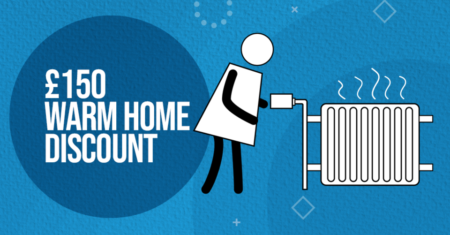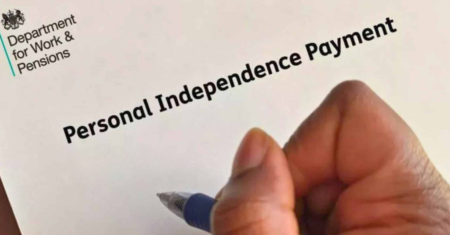
Unemployment benefits are payments that you can receive from the government if you lose your job through no fault of your own. Unemployment benefits can help you cover your living expenses while you look for a new job or retrain for a different career. However, applying for and receiving unemployment benefits can be a complex and confusing process, especially if you are not familiar with the rules and requirements of your state.
Therefore, it is important to understand the basics of unemployment benefits and how to file your claim correctly and on time. In this article, we will explain some of the key concepts and steps involved in applying for and receiving unemployment benefits, and provide some tips and resources to help you with the process.
Related articles
1- Property Tax
2- Tax Return
4- Certified Financial Advisor
What are the eligibility criteria for unemployment benefits?
The eligibility criteria for unemployment benefits vary depending on the state where you worked and live. However, some of the common criteria that you need to meet include:
- You must have lost your job through no fault of your own. This means that you were laid off, fired for reasons other than misconduct, or quit for good cause related to your work or employer1.
- You must have earned enough wages or worked enough hours in your base period. This is usually the first four of the last five completed calendar quarters before you filed your claim1.
- You must be able and available to work. This means that you are physically and mentally capable of working, have no major barriers to work (such as illness, disability, or lack of transportation), and are actively looking for suitable work1.
- You must register with your state’s employment service. This is an agency that provides job search assistance, career counseling, training, and other services to help you find a new job1.
You can find out more about the specific eligibility criteria for your state by visiting your state’s unemployment insurance website2 or by using Bing web search.
How do I apply for unemployment benefits?
To apply for unemployment benefits, you need to file a claim with the unemployment insurance agency in the state where you worked. You can file your claim online, by phone, by mail, or in person, depending on your state’s preference1. You should file your claim as soon as possible after you become unemployed, as there may be a waiting period before you can receive your first payment1.
To file your claim, you will need to provide some information about yourself and your employment history, such as:
- Your personal details, such as your name, address, phone number, email address, Social Security number or Individual Taxpayer Identification Number, citizenship status, and driver’s license number1.
- Your employment details, such as the names and addresses of all your employers in the last 18 months, the dates and reasons for separation from each employer, the amount and type of wages earned from each employer, and any severance pay or other income received from any employer1.
- Your bank account details, such as your bank name, account number, and routing number if you want to receive your payments by direct deposit1.
You may also need to provide other documents or information depending on your situation, such as:
- Your military discharge papers (Form DD-214) if you served in the military in the last 18 months1.
- Your federal civilian employee identification card (Form SF-8 or SF-50) if you worked for the federal government in the last 18 months1.
- Your alien registration card (Form I-94 or I-551) if you are not a U.S. citizen or national1.
- Your union card or contact information of your union representative if you are a union member1.
You can find more information and guidance on how to file your claim in your state by visiting your state’s unemployment insurance website2 or by using Bing web search.
How much will I receive in unemployment benefits?
The amount of unemployment benefits that you will receive depends on several factors, such as:
- Your previous earnings. Your weekly benefit amount is usually calculated based on a percentage of your average weekly wage during your base period1. The maximum weekly benefit amount varies by state but is generally capped at a certain level1.
- Your dependents. Some states may increase your weekly benefit amount if you have dependents, such as children or spouses who rely on your income1.
- Your other income. Some types of income may reduce or offset your weekly benefit amount, such as part-time wages, severance pay, pension payments, or Social Security benefits1.
You can use a calculator to estimate how much unemployment benefits you can get in your state based on your income and situation. You can find a calculator on some state’s unemployment insurance websites2 or on other reputable websites.
How long will I receive unemployment benefits?
The duration of unemployment benefits that you will receive depends on several factors, such as:
- Your state’s unemployment rate. The number of weeks that you can receive regular unemployment benefits varies by state but is usually between 12 and 26 weeks1. However, some states may extend the number of weeks that you can receive benefits if the state’s unemployment rate is high or if there is a special circumstance, such as a natural disaster or a pandemic1.
- Your eligibility status. The number of weeks that you can receive regular unemployment benefits also depends on your continued eligibility for benefits. You must meet certain requirements every week that you claim benefits, such as reporting your income and work search activities, being able and available to work, and accepting suitable work offers1.
- Your federal benefits. The number of weeks that you can receive regular unemployment benefits may be supplemented by federal benefits under certain programs, such as the Pandemic Emergency Unemployment Compensation (PEUC) or the Pandemic Unemployment Assistance (PUA) programs. These programs provide additional weeks of benefits to eligible individuals who have exhausted their regular benefits or who are not eligible for regular benefits due to the COVID-19 pandemic1.
You can find out more about the duration of unemployment benefits in your state by visiting your state’s unemployment insurance website2 or by using Bing web search.
What are some tips and resources for filing and receiving unemployment benefits?
Filing and receiving unemployment benefits can be a complex and confusing process, but there are some tips and resources that can help you with it, such as:
- File your claim as soon as possible after you become unemployed, as there may be a waiting period before you can receive your first payment1.
- Keep a record of your income and work search activities, as you may need to report them every week that you claim benefits1.
- Respond to any requests or notices from your state’s unemployment insurance agency promptly and honestly, as they may affect your eligibility or amount of benefits1.
- Check your online account or mailbox regularly for any updates or correspondence from your state’s unemployment insurance agency, as they may contain important information or instructions about your claim1.
- Use the online services or phone system of your state’s unemployment insurance agency to check your claim status, request payments, view payments history, update your information, or ask questions about your claim1.
- Visit your state’s employment service website or office to access job search assistance, career counseling, training, and other services to help you find a new job1.
- Use Bing web search to find more information and guidance on filing and receiving unemployment benefits in your state or country.
Unemployment benefits are payments that you can receive from the government if you lose your job through no fault of your own. Unemployment benefits can help you cover your living expenses while you look for a new job or retrain for a different career. However, applying for and receiving unemployment benefits can be a complex and confusing process, especially if you are not familiar with the rules and requirements of your state. Therefore, it is important to understand the basics of unemployment benefits and how to file your claim correctly and on time. In this article, we have explained some of the key concepts and steps involved in applying for and receiving unemployment benefits, and provided some tips and resources to help you with the process. We hope that this article has been helpful and informative for you. If you have any questions or comments about this article, please feel free to contact us. Thank you for reading.
About the Author






0 Comments